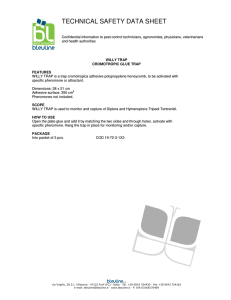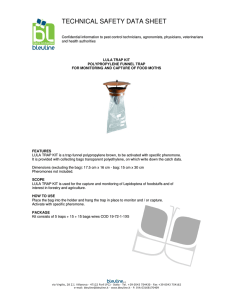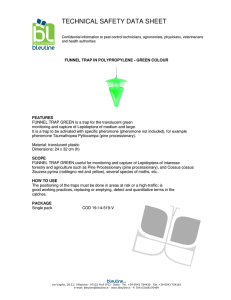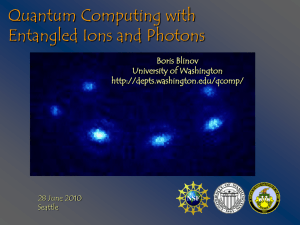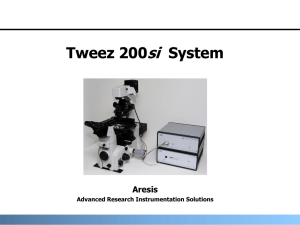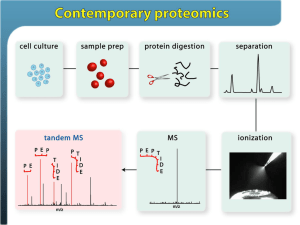Final Report - QOSC2007 (Coupling of trapped
advertisement
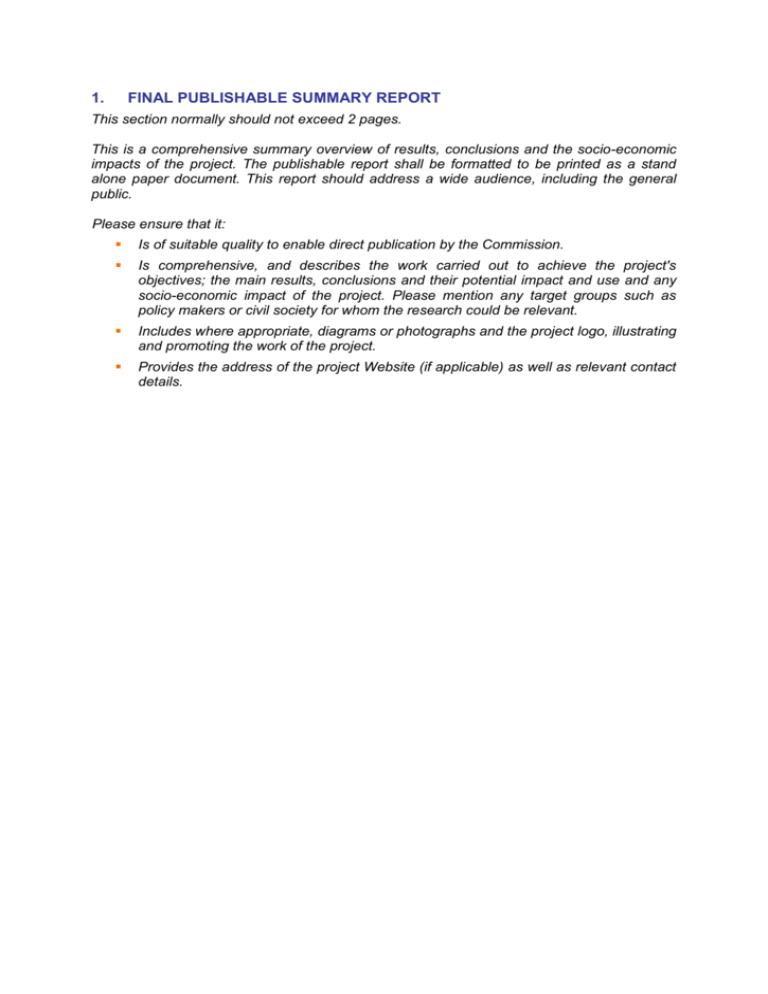
1. FINAL PUBLISHABLE SUMMARY REPORT This section normally should not exceed 2 pages. This is a comprehensive summary overview of results, conclusions and the socio-economic impacts of the project. The publishable report shall be formatted to be printed as a stand alone paper document. This report should address a wide audience, including the general public. Please ensure that it: Is of suitable quality to enable direct publication by the Commission. Is comprehensive, and describes the work carried out to achieve the project's objectives; the main results, conclusions and their potential impact and use and any socio-economic impact of the project. Please mention any target groups such as policy makers or civil society for whom the research could be relevant. Includes where appropriate, diagrams or photographs and the project logo, illustrating and promoting the work of the project. Provides the address of the project Website (if applicable) as well as relevant contact details. Introduction: Trapped ions offer a unique system for the study of quantum information and constitute one of the most promising candidates for the implementation of a quantum computer. Extreme control of their quantum state, quantum gates and elementary algorithms have been demonstrated. Currently, several different schemes for the transfer of quantum information, the information encoded in the electronic state of a trapped ion, are being explored, with the aim of constructing a scalable quantum computer. Our motivation in this project was to provide a solid-state quantum bus for trapped ions, in order to couple the motional states of distant trapped ions. This route is of great technological and fundamental importance, extending beyond the scope of ion-trap quantum computation: It will allow the coupling of atomic systems to mesoscopic solid-state systems, a very active field of research. In addition, it can give rise to a new set of experimental tools for studying electronic transport and noise in normal metals and superconductors. Trap Fabrication: One key requirement in ion trap technology is the availability of micro-fabricated ion traps. A decrease in the size of ion traps is necessary, as it will lead to increased speed of the quantum-logical operations one can achieve. In addition, ion-trap chips lithographically fabricated in a “clean room” micro-fabrication environment offer the great promise of ultimate scalability, very much like the paradigm of semiconductor integrated circuits. In collaboration with the group of A Wallraff in Zurich, we have developed such a micro-trap fabrication process (See Fig. 1). Figure 1: A micro-fabricated planar trap, wired-up and ready for use Current technology limitations: To date, ion trap miniaturization is impeded by two major problems: excessive electric field noise originating from trap electrodes, and electrostatic charging of the traps. The former problem exceeds the boundaries of the ion trap community. In fact, an environment with minimal electric field noise is important in many fields in science, for example nanomechanics, single spin detection, and the measurement of weak forces. Experiments with single ions trapped above metallic surfaces reveal that electric noise is several orders of magnitude stronger than that expected from Brownian motion of electrons in the trap electrodes. A known way to reduce electronic noise on trap electrodes is by operating the trap at cryogenic temperatures. Thus, construction of cryogenic ion-trap systems is a direction which many ion-trap groups are taking. Advances in the noise problem: In the course of our work, we used single trapped ions to address both problems mentioned above: we used a single trapped ion as a movable and extremely sensitive electronic noise sensor, and as a movable electrostatic field sensor (see Fig. 2). These advances allowed us to shed new light into the possible mechanism of anomalous heating in ion traps, and to correlate trap charging with trap operation. Especially with regard to the noise problem, we established a possible connection between electric field noise and surface contamination of trap electrodes. As a result, the possibility of using surface cleaning and characterization tools to attack the problem of electric field noise is starting to be accepted by the ion trap community as a promising solution that could be used to achieve outstanding ion trap performance. This has culminated in a new direction for ion trap groups: the combination of the standard atomic phycisist's toolbox with those of the surface scientist to try and bring modern ion traps to their full potential. We anticipate this to turn into a rather active field of research within, and perhaps even beyond, the ion trap community. Figure 2: (a) Plot of the three components of electrostatic field measured at the ion position above a planar trap. Axial position specifies the position on the trap along the so-called ‘trap axis’. (b) Electrc field noise at different positions above an ion trap surface. The position dependence is presumably due to local surface contamination. Electrostatic field sensing: In various modern ion trap experiments it is necessary to optimize the trap parameters in the presence of unknown, and possibly changing, quantities, such as stray charges on the experimental setup. As a solution to this problem, we have developed a new method for so called micro-motion compensation which is suitable for use in planar traps. This method is indispensable for our experiments, but also of interest to the entire ion trap community. In addition, we have employed this method in order to map out the all three components of the stray electric field over a millimeter-sized region of a planar trap (Fig. 2a). The spatial resolution of the electric field mapping is currently in the micrometer regime, with the possibility of reaching even higher resolution values. This technique opens up the pathway for a potentially useful novel application of ion traps as a diagnostic tool in ultrahigh vacuum environments. Electrostatic control tools: Ion traps are simple devices in the sense that their function is governed by very wellknown laws: the Maxwell laws of electromagnetism. Nevertheless, ultimate control of a trapped ion requires sophisticated numerical solution methods, beyond the precision offered by commercially available electrostatics solvers. In addition, tools for computer controlled optimization of trap parameters are essential in making use of the results of an electrostatics solver. In specific, numerical tools for independent control of all the independent electrostatic parameters of an ion trap have been a long sought-after goal. Such tools, in the form of a matlab library of functions, have been developed in the course of this project. They are currently in use in Prof. Häffner's labs, as well as in Prof. Blatt's group in Innsbruck, and have been made available to various other European and international groups. Cryogenic trap setup: As already mentioned, at cryogenic temperatures electric field noise produced by trap electrodes is greatly suppressed. Thus, the construction of a cryogenic ion-trap systems is a direction which many iontrap groups are taking. In this project we have developed and built a a cryogenic ion-trap system in Dr Häffner’s group. Based on the same basic design principles, a second similar cryogenic setup is operating in Prof. Blatt’s group in Innsbruck. The existence of the cryogenic setup is necessary for the trapped-ion coupling experiments in order to reduce the electronic noise the ions will experience, but also for an additional reason: It is of fundamental physical interest to investigate the coherence properties of the ion coupling for metals at low temperatures, and specifically superconducting metals.
